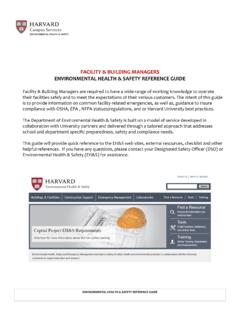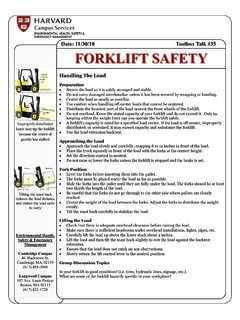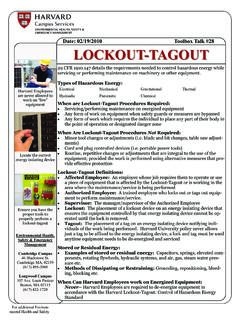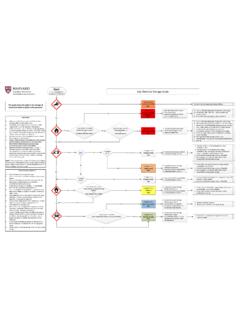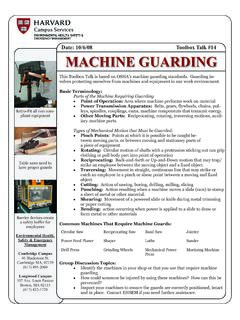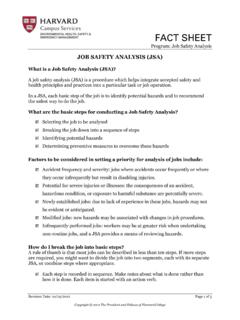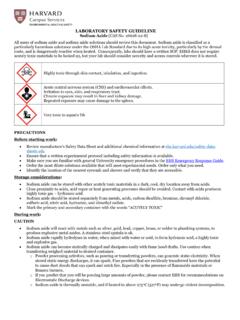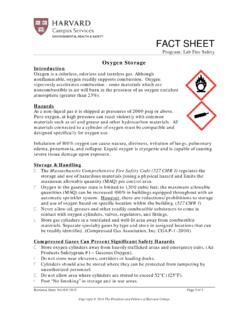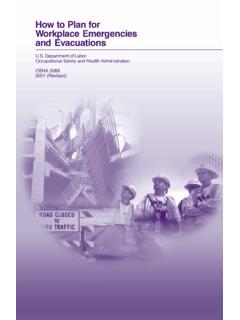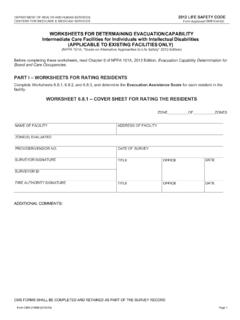Transcription of Toolbox Talk #9 FIRE SAFETY - Harvard University
1 fire SAFETYFIRE SAFETY Environmental Health, SAFETY & Emergency Management Cambridge Campus 46 Blackstone St. Cambridge MA, 02139 (617) 495-2060 Longwood Campus 107 Ave. Louis Pasteur Boston, MA 02115 (617) 432-1720 Basic fire SAFETY knowledge is an important skill that can save your life on or off the job. Here we will breakdown basic characteristics of a fire , important fire SAFETY tips, what to do if you find yourself involved with a fire and some discussion points for your group. Characteristics of fire To support fire , you must have; HEAT, FUEL, OXYGEN, and SUSTAINED CHEMICAL REACTION A small fire can grow out of control in as little as 30 seconds. A room involved with a fire can have a temperature of 100 C at floor level and 600 C at eye level.
2 In less than 5 minutes a room can flashover. fire starts bright but will quickly turn the room pitch black from releasing smoke and toxic gases. Be familiar with your surroundings and evacuation routes! fire SAFETY Tips An important fire SAFETY tip is to look for and eliminate any potential fire hazards before they become a reality! Know where pull stations and extinguishers are located. Time is the biggest enemy, get out of the building! If a fire , pull nearest fire alarm if possible, if not, call for help from a safe lo-cation outside. If smoke, stay as low to the ground as possible. If safe, close all doors behind you as you leave the building. Don t use the elevator for evacuation because the shaft can act as a chimney.
3 Elevators also present an entrapment hazard if they fail. Never return to a burning building. Group Discussion Topics Identify all high risk areas in your facilities. Where are the nearest fire extinguishers, pull stations, and your buildings primary and secondary evacuation routes? Can these areas be modified to eliminate or lessen the potential risk? Most fires occur between 1:00 and 7:00 Brainstorm what causes this and how you could address these issues. Identify if anyone has seen any close calls or fires during their tenure. How were those situations handled, good or bad? Ask the group to list any unanswered fire SAFETY questions or concerns that they may have and submit to EHSEM for assistance. Toolbox Talk #9 Date: 10/6/08 fire Tetrahedron Familiarize yourself with the nearest pull stations and fire extin-guishers fire doors should never be propped open by using a foreign ob-ject
